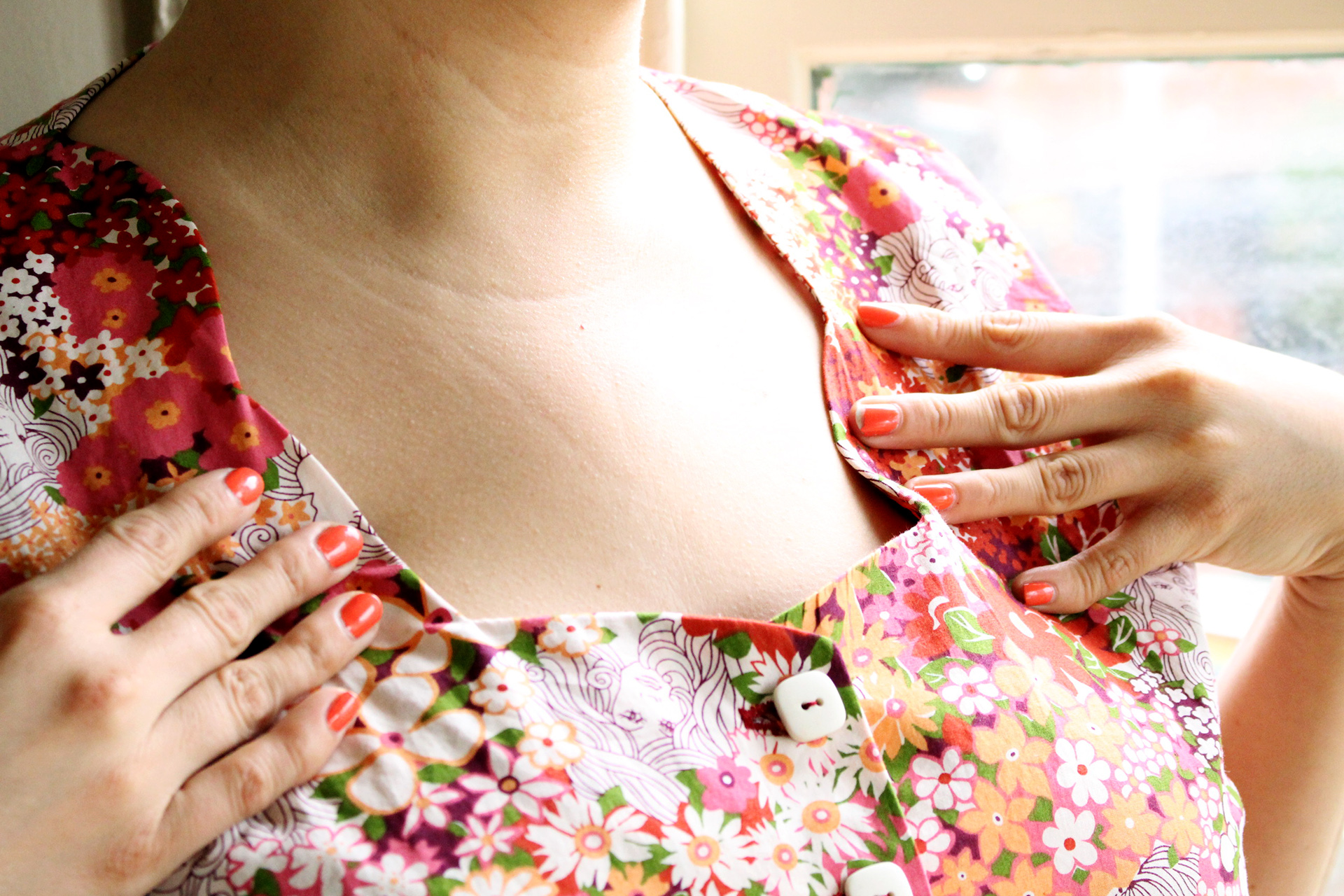Vintage Simplicity sewing patterns are definitely some of my favorites.
A while back I stumbled on an absolute vintage gem from 1948, “Pattern for Smartness” which totally endeared me to Simplicity. The video was an advertisement, but honestly, the campy, “wholesome” vibe is one of my favorite aspects of vintage life.
Dipping your toe into vintage Simplicity 1460 definitely sends you to the 1950s with its pretty peplum.
Peplums do a phenomenal job of nipping you in at the waist and then flaring at the hips, which look great on people with short torsos like myself. I originally found this pattern a few years ago and was super excited to try it for my first pinup sewing video.
The fabrics recommended for this pattern are below:
- Light-to-midweight cottons and linens
- Brocade
- Cotton Lawn
- Cotton types
- Crepe
- Crepe de Chine
- Dupioni
- Shantung
- Lace
- Sateen
- Satin
- Voile
To keep it simple for this sewing video and to make this quickly, I went with a midweight cotton for both versions of this peplum. If I were to make this again, I would definitely push myself more towards cotton lawn, woven eyelet fabrics, or even voile for a more delicate, less structured look, all with a silk camisole underneath (I’m thinking something like the Seamwork Savannah.)

Tip #1: Watch the pattern ease!
The biggest complaint I read before starting to sew vintage Simplicity 1460 was that there was a huge amount of wearing ease- and I can confirm it 100%.
For vintage styles and modern pinup styles, huge wearing ease can be a style faux-pas, and with silhouette-hugging style such as this vintage Simplicity, its something you want to avoid (while also avoiding gaping buttonholes!)
Decide on your size using the measurements on the pattern paper, not the measurements on the pattern envelope. In my case, I wanted to be mindful of any full bust adjustments that might be necessary so I picked my size based on my high bust with an inch of ease, and then did my adjusting as necessary. I speak to this at timestamp 1:20 in my video.


Tip #2: Decide early on how long you want the peplum to be.
Luckily, I only shortened my peplum just slightly, based off my height of 5’2″. I don’t see myself making the tunic length; it would probably make me look shorter than I already am!
If you’re taller, you can definitely lengthen both the torso of the bodice and the peplum evenly, to keep the right proportions all around.
There were plenty of people in the sewing community who lengthened the peplum into a full skirt, transforming this into a vintage dress. Please be mindful that the peplum is essentially a short circle skirt attached to a bodice: and lengthening the peplum will make for a lot more fabric used and will require extra reinforcements on the waistline, such as a grosgrain ribbon waist stay (discussed in my Vintage Vogue 8789 video, timestamp 9:25)
Tip #3: Practice your Sewing 101 Basics
Darts and buttonholes, while used extensively in garment sewing, really take center stage.
This pattern features double french darts, beautifully curved darts that aren’t sewn in a straight line, discussed at timestamp 5:20 in the video.
Buttonholes, because they are literally front and center, can really make or break the look of this piece. In both instances of this blouse, I used a busy fabric which (thankfully) disguised my wonky buttonholes. Be mindful that taking some time to practice your buttonholes will ensure that this vintage blouse looks perfect!
I hope the above tips help you when you jump into making this blouse!

What sort of fabric would you use if you were to make vintage Simplicity 1460? How do you see yourself styling it for that perfect pinup outfit?
Disclaimer: This post contains affiliate links :)




